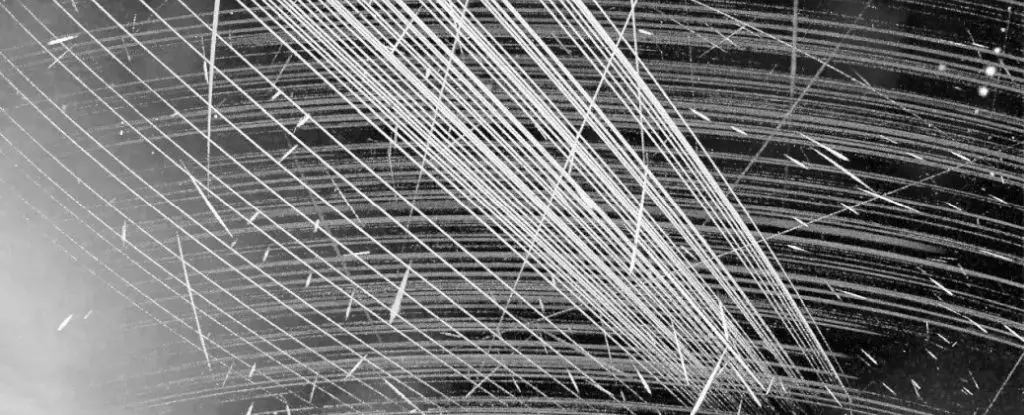The proliferation of satellite swarms around Earth has transformed our capabilities in communication, navigation, and global connectivity. However, this rapid expansion comes with alarming consequences, particularly for radio astronomy. Among these swarms, the second generation of SpaceX’s Starlink satellites—known as the v2mini and v2mini Direct-to-Cell—has emerged as a major concern, leaking significantly more radiation than their predecessors. This article examines the implications of this increasing radiation leakage and highlights the urgent need for regulatory action to preserve the integrity of astronomical observations.
Recent data indicates that the v2mini Starlink satellites emit radiation that is up to 32 times more potent than that released by their first-generation counterparts. This is particularly troubling given that some of this radiation occupies critical radio wavelengths specifically reserved for radio astronomy research. Cees Bassa, an astronomer at the Netherlands Institute for Radio Astronomy (ASTRON), emphasizes the severity of the problem by noting that the unintentional emissions from these satellites are not just a minor irritation; they are, in fact, approximately 10 million times brighter than the faintest celestial sources captured by instruments like LOFAR. Such brightness levels can overpower the faint astronomy signals that scientists rely on for vital research, likening the situation to trying to spot the dimmest stars next to the overwhelming glow of a full moon.
As more satellites are launched—currently numbering over 6,398 and counting—the intensity of these emissions presents an escalating challenge for astronomers. The saturation of low-Earth orbit with such satellites raises critical questions regarding the preservation of the radio frequency spectrum that plays a pivotal role in space exploration.
SpaceX represents only a portion of the growing satellite landscape. Competitors like OneWeb, Amazon, and China’s Spacesail Constellation are also making their mark, with each entity planning to launch hundreds to thousands of additional satellites. This collective effort not only contributes to visual light pollution, noticeable as streaks across the night sky during observations, but also exacerbates electromagnetic interference that hinders radio astronomy.
A comprehensive study conducted with LOFAR’s extensive array of antennas revealed that 97 Starlink satellites were emitting radio waves in the range of 110 to 188 MHz. Alarmingly, the emissions from the newer v2mini models were found to be significantly stronger than those from earlier generations. Given that current regulations do not address these unintended electromagnetic emissions, the scientists behind the study call for immediate governmental intervention to curb this problem as satellite launches increase.
The absence of specific regulations targeting electromagnetic emissions from satellite constellations is particularly concerning amid the explosive growth of these satellite networks. While the radiation emitted from individual satellites may seem negligible, the cumulative effect of thousands of satellites could create a pervasive barrier to crucial astronomical research. Engineers and scientists, including Federico Di Vruno of the SKA Observatory, emphasize the essential role of industry collaboration in mitigating this issue.
Moreover, beyond its impact on research, radio astronomy plays a pivotal role in technological advancements that benefit life on Earth. Innovations developed through space observation have led to breakthroughs in various fields, including telecommunications and medical technology. The potential interference with radio astronomy could, therefore, have unforeseen repercussions that extend well beyond academic inquiry.
As experts call for regulatory frameworks to address the growing issue of electromagnetic interference, there is an urgent need for satellite operators to take responsibility for minimizing their emissions. The onus lies not only on regulatory bodies to respond but also on industry stakeholders to adopt sustainable practices that consider the long-term implications of their technological advancements.
Jessica Dempsey, ASTRON’s general and scientific director, encapsulates this critical juncture by urging for collaborative efforts between regulators and the satellite industry. “We just need the regulators to support us, and the industry to meet us halfway,” she states.
The burgeoning number of satellites in low-Earth orbit raises significant concerns for the future of radio astronomy. With rapid advancements in technology creating new challenges, proactive measures are essential to reconcile the needs of modern communication infrastructure with the crucial work of astronomical research. If not addressed, the increasing radiation leakage from satellite swarms may obscure our view of the universe, stifling progress in both space exploration and terrestrial technological development.


Leave a Reply